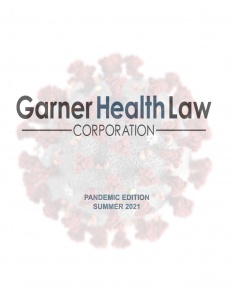This article, Ignorance is not bliss: The consequences of how little we know about COVID-19, first appeared in the California Lawyers Association’s California Law News, 2020, Issue Three on October 25, 2020.
 “Those who can make you believe absurdities can make you commit atrocities.” – François-Marie Arouet (Voltaire)
“Those who can make you believe absurdities can make you commit atrocities.” – François-Marie Arouet (Voltaire)
LESSONS FROM THE PAST (X37.41XA)1
Following the 1994 Northridge earthquake, California passed legislation requiring hospitals to upgrade their physical infrastructure to survive future seismic events. Twenty-six years and multiple extensions later, California hospitals face a 2030 deadline with an eleven-figure price tag.2 Spending money on what may occur is not uncommon in health care. A 2017 study commissioned by the American Hospital Association estimated that hospitals and health systems spent as much as $2.7 billion the year before to prepare for, and respond to, the threat of violence at work.3 California law requires hospitals to rehearse disaster plans at least twice each year.4
A NOVEL THREAT (A98.4)5
An expensive endeavor, hospital disaster preparedness focuses on a rapid response to an unexpected event, designed to protect, stabilize, and bring calm to shaken communities following a disaster’s aftermath. The 2019 novel coronavirus disease (COVID-19) has presented a different type of disaster, necessitating just as novel a response. In the pandemic’s early days, it moved in slow-motion as the health care community initiated disaster protocol over a period of weeks, not hours. While mobilizing any hospital to battle a pandemic is not easy, legally at least, hospitals benefitted from unprecedented support by practically every federal and state agency. The assistance from these dual agencies eliminated most barriers overnight so hospitals could establish and maintain momentum in the face of an epic disaster that, over several months, has moved forward, backward, and forward again.6 … Read more →



















![Formul [url=http://www.istockphoto.com/my_lightbox_contents.php?lightboxID=6549169 ][img]http://photofile.ru/photo/alengo/3749832/large/85679456.jpg[/img][/url] [url=http://www.istockphoto.com/my_lightbox_contents.php?lightboxID=4411471 ][img]http://photofile.ru/photo/alengo/3723954/large/84303967.jpg[/img][/url]](http://garnerhealth.com/wp-content/uploads/2017/04/iStock_000021503855XSmall-300x225.jpg)










